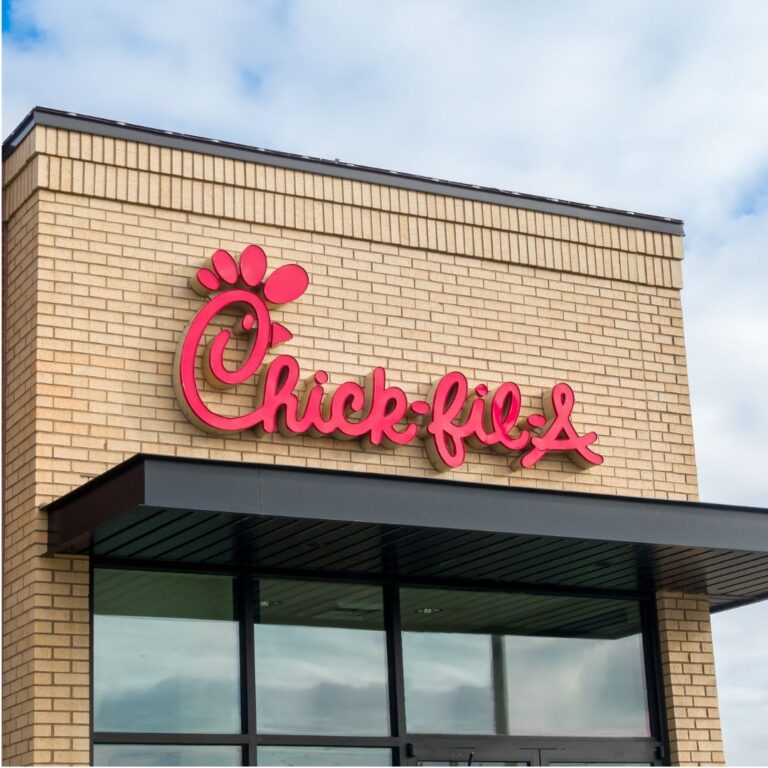Chick-fil-A is a name synonymous with chicken sandwiches and exceptional customer service. But behind this successful fast-food chain lies a rich history of innovation, strong values, and a commitment to quality that has driven its growth from a single diner to a national sensation.
The Humble Beginnings: Dwarf Grill
The story of Chick-fil-A begins in 1946, in Hapeville, Georgia, a small town just south of Atlanta. There, a man named S. Truett Cathy opened a modest diner called the Dwarf Grill (later renamed the Dwarf House). Cathy, a World War II veteran, invested his life savings into the venture, determined to provide quality food and exceptional service to his customers.
The Dwarf Grill was a classic American diner, serving hamburgers, hot dogs, and other popular fare of the day. However, Cathy quickly realized that customer satisfaction was about more than just a wide menu—it was about offering something unique and consistently excellent. This insight would become a cornerstone of his future business philosophy.
The Birth of the Chicken Sandwich
The pivotal moment in Chick-fil-A’s history came in the early 1960s. S. Truett Cathy, ever the innovator, began experimenting with chicken in an era when beef reigned supreme in the fast-food industry. He was particularly intrigued by the idea of a boneless, skinless chicken breast cooked quickly and served on a bun, similar to a hamburger but made with chicken.
After years of trial and error, Cathy perfected his recipe. He developed a pressure-cooking method that allowed the chicken to be cooked quickly while retaining its flavor and moisture. The chicken breast was seasoned with a unique blend of spices, cooked in peanut oil, and served on a buttered bun with two pickles. Thus, the original Chick-fil-A chicken sandwich was born in 1964.
This simple yet distinctive sandwich became the foundation of what would soon be known as Chick-fil-A. However, the sandwich was initially sold at the Dwarf House and later at other restaurants, not under the Chick-fil-A brand. Cathy continued to refine his concept, knowing he had something special on his hands.
The First Chick-fil-A Restaurant
In 1967, after seeing the success of his chicken sandwich in various locations, Cathy decided to open the first Chick-fil-A restaurant. It was located in Atlanta’s Greenbriar Mall, and it was one of the first fast-food restaurants to be established in a shopping mall, a novel idea at the time. This strategic move positioned Chick-fil-A in a high-traffic area, giving it the exposure needed to attract customers.
The concept was simple: focus on one item—the chicken sandwich—and do it exceptionally well. This focus on quality and consistency, paired with Cathy’s commitment to customer service, quickly distinguished Chick-fil-A from its competitors.
Expansion and Growth
Throughout the 1970s and 1980s, Chick-fil-A gradually expanded its footprint, opening more mall-based locations across the Southeast. The company’s growth was steady and intentional, emphasizing quality over rapid expansion. Cathy was known for his conservative business practices, preferring to finance growth from within rather than taking on debt or franchising too quickly.
In the mid-1980s, Chick-fil-A began opening free-standing restaurants, which allowed for greater visibility and more flexibility in terms of location. This move marked a significant turning point for the brand, allowing it to expand beyond the confines of shopping malls and reach a broader audience.
The “Eat Mor Chikin” Campaign and National Expansion
In 1995, Chick-fil-A launched one of the most iconic advertising campaigns in fast-food history: “Eat Mor Chikin.” The campaign featured a group of mischievous cows, desperate to save their own hides by convincing people to eat chicken instead of beef. The humorous and clever ads struck a chord with consumers, and the cows quickly became a beloved symbol of the brand.
The success of the “Eat Mor Chikin” campaign, coupled with the company’s ongoing commitment to quality and service, fueled Chick-fil-A’s national expansion. By the 2000s, Chick-fil-A had grown beyond its Southern roots, opening restaurants across the United States.
Commitment to Values
Throughout its history, Chick-fil-A has remained steadfast in its commitment to the values that Truett Cathy instilled in the company. One of the most notable is the decision to close all Chick-fil-A restaurants on Sundays. Cathy believed that employees should have the opportunity to rest, spend time with family, and worship if they choose. This policy has remained in place since the first Chick-fil-A opened and continues to this day, despite the potential for significant additional revenue.
Chick-fil-A is also known for its philanthropic efforts, particularly through the Chick-fil-A Foundation, which supports education, youth, and community development programs. The company’s corporate purpose is “to glorify God by being a faithful steward of all that is entrusted to us, and to have a positive influence on all who come in contact with Chick-fil-A.”
The Next Generation
Truett Cathy’s leadership laid a solid foundation for Chick-fil-A’s success, and his children have continued to carry the torch. Today, Chick-fil-A is led by his son, Dan Cathy, and the company remains privately owned. Under Dan’s leadership, the company has continued to innovate, embracing technology and expanding its menu to include items like salads, wraps, and breakfast options.
Chick-fil-A has also expanded internationally, opening locations in Canada and the United Kingdom, among other countries. Despite its growth, the company has maintained its focus on quality, customer service, and community engagement.
From a small diner in Georgia to one of the largest fast-food chains in the United States, Chick-fil-A’s history is a testament to the power of innovation, consistency, and a strong commitment to values. The company’s journey reflects the vision of its founder, S. Truett Cathy, who believed that success was about more than just serving food—it was about making a positive impact on people’s lives. As Chick-fil-A continues to grow and evolve, it remains rooted in the principles that have guided it for over 75 years, ensuring that the legacy of its founder lives on.

